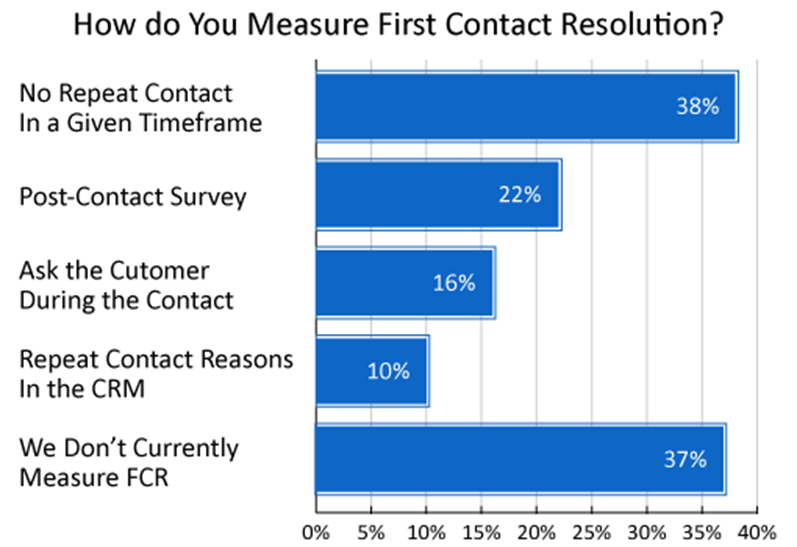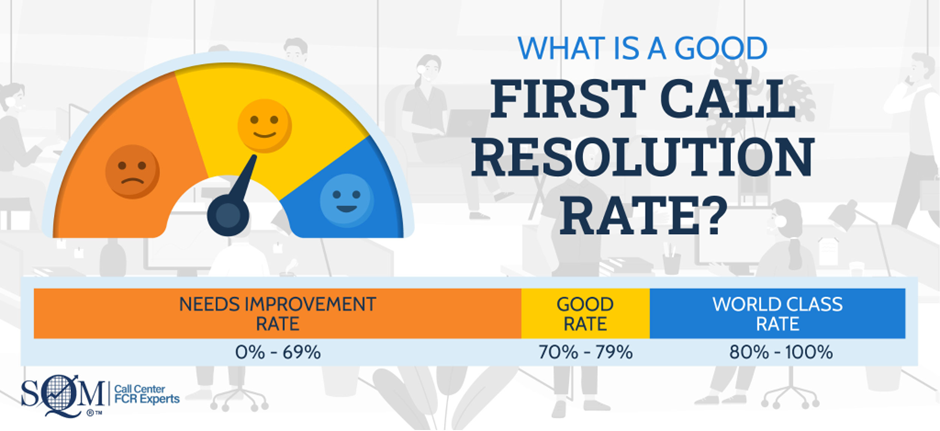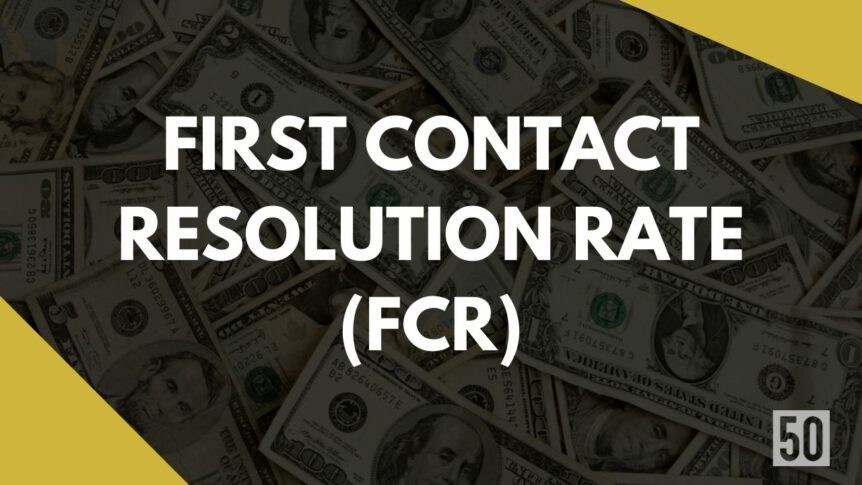First contact resolution (FCR) is a metric that measures how efficient customer service agents are able to address customer complaints and inquiries on the first try. This metric is important for businesses because it can help them identify areas where they need to improve customer service in order to provide a better experience for their customers and increase customer loyalty.
In this blog post, we will discuss what first contact resolution is, why it’s important, and how businesses can improve their FCR rate. We’ll also share some tips for entrepreneurs who are just starting out and want to make sure they have a good foundation for customer service.
What is First Contact Resolution (FCR)?
First Contact Resolution (FCR) is a metric used to measure the effectiveness of customer service efficiency and customer experience. It is calculated as the percentage of customer questions and requests successfully solved at first contact. For an issue to be considered resolved at the first contact, it must meet two criteria:
- Is this the first time the customer has reached out with this request or question?
- And is the issue at hand fixed?
The definition of ‘fixed’ is important and usually depends on the customer support representative flagging the ticket as solved. If the customer contacts us again regarding the same issue within a certain time, the issue is reopened. FCR is an important metric to monitor and improve customer service, but it should be used in collaboration with others.
Why Is It Important For Startups To Track First Contact Resolution (FCR) Metric?
First Contact Resolution (FCR) is an important metric for startups to track as it helps them measure the efficiency of their customer service. This metric allows startups to identify gaps in customer service and take steps to improve overall customer experience. FCR measures the ability of the customer service team to resolve a customer’s inquiry in a single interaction and it indicates how quickly the team can provide customers with the resolution they need.
Tracking FCR helps startups reduce the cost of customer service by eliminating redundant interactions and multiple contacts with the same customer. It also enables them to identify areas where they need to train their customer service staff and improve their response time. Additionally, FCR helps startups identify potential issues that may be causing customer dissatisfaction, allowing them to take proactive measures to prevent them.
FCR helps startups measure customer experience, which leads to higher customer satisfaction and loyalty. It allows them to focus on areas where improvement is needed and make changes accordingly, leading to better customer service.
3 Common mistakes while using First Contact Resolution
Here are some of the common mistakes done while using the first contact resolution in a typical contact center.
1. Don’t Misunderstand the Difference Between First Contact Resolution and Repeat Contacts
A survey of over 130 contact centre professionals recently revealed that the most widely-used way of monitoring FCR was to track repeat contacts within a set period of time. This approach is highlighted below.

FCR and repeat contacts are distinct metrics, and while measuring the latter can provide some indication of customer satisfaction, using it to gauge FCR may produce a skewed result since the customer may contact you for an unrelated issue. Nonetheless, evaluating repeat contacts separately can still be beneficial in gauging your call routing efficiency and the clarity of your messaging.
Don’t just chase the first contact resolution rate
In the customer service environment, there are numerous measurements that need to be taken into consideration such as operational metrics, advisor performance and customer experience metrics. FCR, or First Contact Resolution, is a key customer experience metric that gives insight into how the company is performing from an external point of view; this means that the company is being judged based on customer expectations rather than their own goals.
It is important to strike a balance between improving FCR and not affecting advisor performance or operational abilities; if this balance is tipped too far in favor of FCR, it can lead to negative consequences.
Don’t Measure First Contact Resolution in Isolation
Don’t fall into the trap of measuring First Contact Resolution (FCR) in isolation. A high FCR rate may indicate that customers are able to find answers quickly and efficiently when they contact your organization, but it doesn’t tell the whole story. You need to consider other factors such as Customer Satisfaction (CSat) in order to get an accurate picture of your contact centre’s performance.
As Nerys pointed out, this is similar to only measuring Service Level (SLA) without considering the other potential effects. For example, if you focus solely on an SLA of 95/5, you may find that call transfers are becoming more frequent while the occupancy of your contact centre increases drastically. Therefore, it’s important to look at the bigger picture when assessing your contact centre’s effectiveness.
How do you calculate First Contact Resolution (FCR)?
Get your First Contact Resolution rate with this calculation:
(#) issues resolved on first contact / (#) total no issues X 100 = First contact resolution rate (%)
The First Call Resolution (FCR) rate for a given day can be calculated by dividing the total number of customer interactions successfully resolved on the first try by the total number of unique customer interactions. For instance, if 280 out of 400 customer interactions were resolved on the first attempt, then the FCR rate for that day would be 70%. This formula applies to both internal and external FCR measurement methods, such as quality assurance, customer relationship management, and workforce suites.
What factors affect First Contact Resolution rate?
First Contact Resolution (FCR) rate is affected by a variety of factors. These factors can include the quality and accuracy of customer information in a customer service database, the technical proficiency of customer service representatives, and the availability of resources to respond to complex inquiries. Additionally, FCR rate is affected by the customer service environment and processes in place such as call routing, cross-functional collaboration, and employee satisfaction.
Another important factor that can affect FCR rate is the approach taken by customer service representatives in responding to inquiries. If a representative is able to provide complete and accurate information on the first contact, then the likelihood of successful resolution of customer issues is much higher. On the other hand, if a representative responds to inquiries in an inefficient or unhelpful manner, then the resolution of issues may be delayed or not achieved at all.
Furthermore, the customer service channel employed can also influence FCR rate. For example, if customers are not able to easily submit their inquiries through a web-based form or a mobile app, then customer response time and resolution rate will be adversely affected.
What is a good First Contact Resolution rate?
The First Call Resolution (FCR) rate is an important metric when evaluating the effectiveness of a call centre, as it measures how often customer inquiries or problems are resolved on the first try.
On average, call centers have an FCR rate of 70%, meaning that 30% of customers have to call back regarding the same issue. The industry standard for a good FCR rate is 70-79%, with world-class FCR rates reaching 80% or higher. However, the actual FCR rate can vary depending on various factors, such as call type, line of business and industry.
It is also important to note how the FCR rate is measured. Improving the FCR rate is essential for creating a positive customer experience. The SQM FCR experts have evaluated the following benchmarks when it comes to first contact resolution rate.

First Contact Resolution rate vs. First Response Time
The First Contact Resolution (FCR) metric measures what percentage of customer service tickets are resolved on the first contact, while the First Response Time metric tracks how quickly customer support responds to a query.
A fast response time is beneficial in reducing the amount of time customers must wait for an answer, while FCR ensures that quality replies are sent to assist in resolving customer queries. In order to maximize efficiency and satisfaction, it is ideal to have both a high FCR and a low first response time. Here’s what you need to know about first response time(insert link).
What are strategies to increase First Contact Resolution rate?
First Contact Resolution (FCR) rate is a key metric that measures the effectiveness of customer service teams. When customers have their issues solved on the first contact, it adds significant value to their customer experience. Therefore, increasing the FCR rate is an important goal for any customer service team. There are several strategies that can be implemented to increase the FCR rate, including:
1. Train Employees Properly:
Providing employees with proper training is the most important step in achieving a high FCR rate. Employees should be equipped with the skills and knowledge necessary to provide customers with accurate information and solutions to their inquiries. In addition, having a comprehensive customer service training program can help keep employees up-to-date on new products and services, so they can quickly and accurately respond to customer inquiries.
2. Utilize Automation:
Utilizing automation to automate mundane tasks or answer repetitive customer inquiries can free up agents to focus on more complex problems. By incorporating automated solutions into a customer service strategy, agents can reduce the time required to resolve customer inquiries and increase FCR rate.
3. Optimize Your Knowledge Base:
Having an up-to-date knowledge base can help agents quickly resolve customer inquiries. By having accurate, detailed answers to common questions readily available, agents will be able to provide customers with the necessary information more quickly.
4. Monitor and Analyze Customer Interactions:
Analyzing customer interactions can help identify patterns and common issues customers are facing. By understanding the root cause of customer issues, it is possible to improve processes to resolve those issues faster and improve FCR rate.
5. Stay Up-To-Date:
It is important to stay up-to-date with the latest industry trends and changes to ensure customer service teams can provide accurate answers and solutions. Keeping up-to-date on new products, services, and processes can help teams provide customers with the most accurate solutions to their inquiries.
By following these strategies, customer service teams should be able to significantly improve their FCR rate and provide customers with an excellent customer experience.
Conclusion
In order to reduce customer effort, it is important for businesses to focus on their First Contact Resolution Rate (FCR). By training employees to handle customer inquiries effectively and efficiently, businesses can improve their FCR. In turn, this will lead to improved customer satisfaction rates and increased sales.

